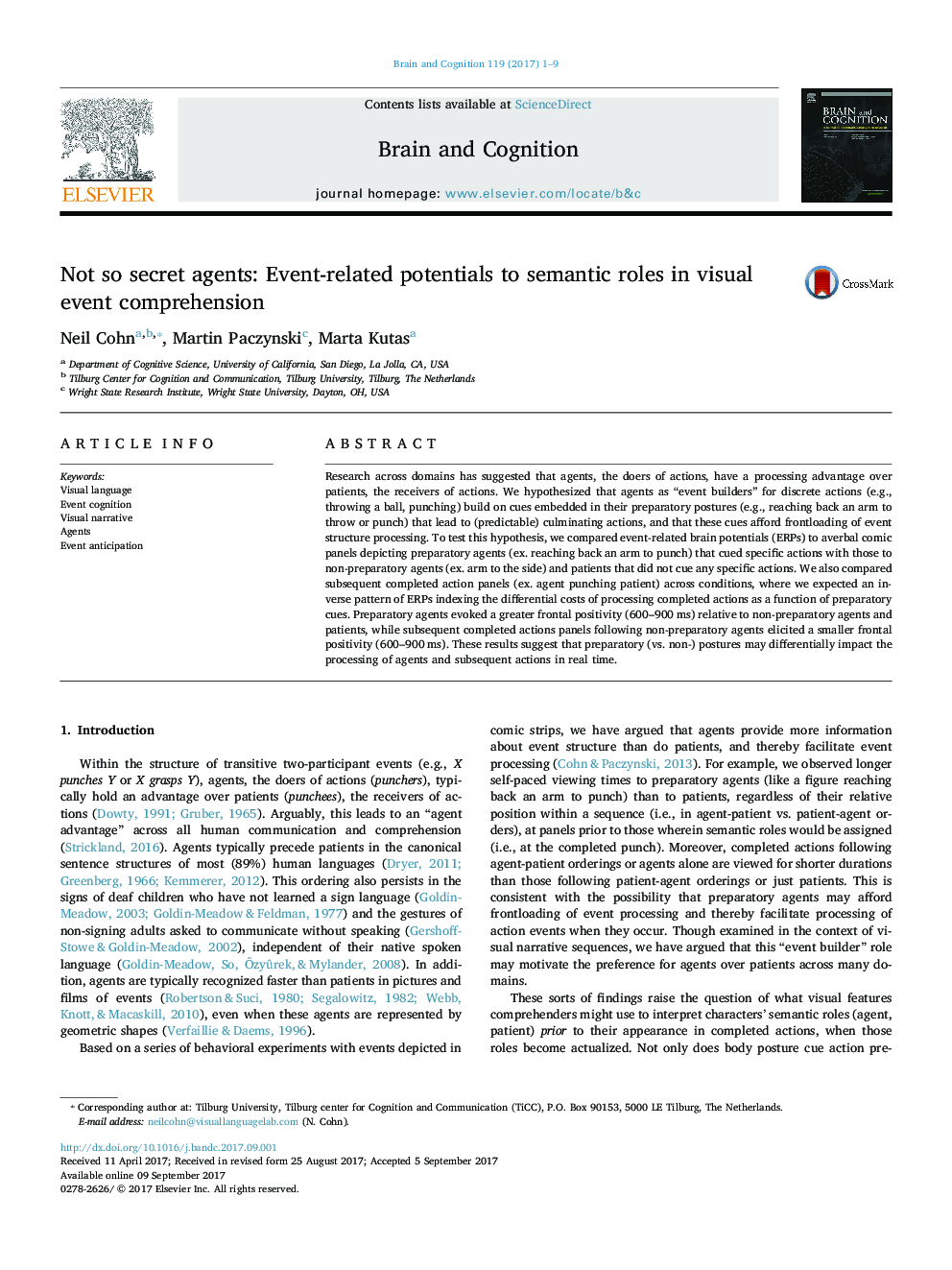| Article ID | Journal | Published Year | Pages | File Type |
|---|---|---|---|---|
| 5041047 | Brain and Cognition | 2017 | 9 Pages |
â¢Across domains, agents typically have a processing advantage over patients.â¢We hypothesized that agents are cued by preparatory postures prior to completed actions.â¢Preparatory agents evoked a greater frontal positivity than non-preparatory agents or patients.â¢Completed actions after non-preparatory agents elicited a reduced frontal positivity.â¢Preparatory postures cue the processing of agents and subsequent actions.
Research across domains has suggested that agents, the doers of actions, have a processing advantage over patients, the receivers of actions. We hypothesized that agents as “event builders” for discrete actions (e.g., throwing a ball, punching) build on cues embedded in their preparatory postures (e.g., reaching back an arm to throw or punch) that lead to (predictable) culminating actions, and that these cues afford frontloading of event structure processing. To test this hypothesis, we compared event-related brain potentials (ERPs) to averbal comic panels depicting preparatory agents (ex. reaching back an arm to punch) that cued specific actions with those to non-preparatory agents (ex. arm to the side) and patients that did not cue any specific actions. We also compared subsequent completed action panels (ex. agent punching patient) across conditions, where we expected an inverse pattern of ERPs indexing the differential costs of processing completed actions as a function of preparatory cues. Preparatory agents evoked a greater frontal positivity (600-900 ms) relative to non-preparatory agents and patients, while subsequent completed actions panels following non-preparatory agents elicited a smaller frontal positivity (600-900 ms). These results suggest that preparatory (vs. non-) postures may differentially impact the processing of agents and subsequent actions in real time.
